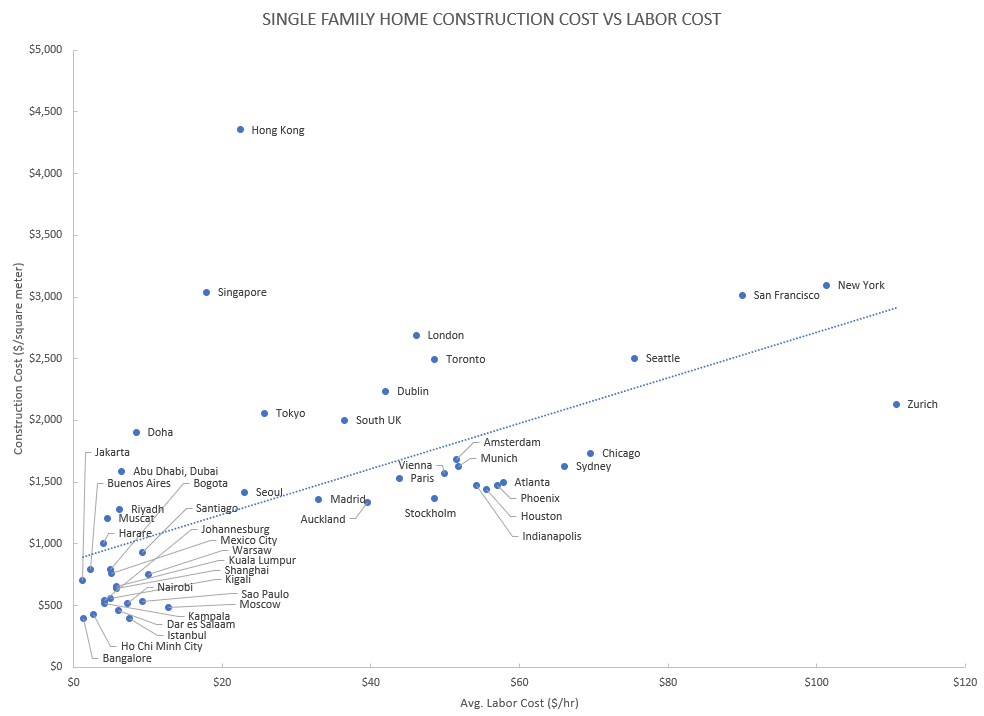"Lumber Price FAQ"
From Construction Physics, Dec 22, 2020:
Welcome to Construction Physics, a newsletter about the forces shaping the construction industry.
With a few exceptions, this newsletter has focused mostly on building construction in the US. It’s what I’m most familiar with, and what I’m most confident in my ability to accurately contextualize. And if construction were a globalized marketplace, we might expect conclusions drawn about the US market to generalize around the world. But of course construction is NOT a globalized marketplace, it’s a hyper-local one. So different regions will have different construction traditions, use different materials, make different capital/labor tradeoffs, and so on. Once in place, building technology tends to be difficult to dislodge, and extremely efficient methods might not diffuse through the market. So it’s useful to take a look at construction costs around the world, and see if there’s any obvious improvements the US could adopt.
For cost data, we can use the Turner and Townsend International Construction Market Survey. This is a survey of 64 different construction markets around the world, that asks respondents for cost information about different project types, materials, and labor. As always, construction costs have a high variance, so these values should be assumed to have some wide confidence intervals on them.
Single Family Homes
To start, let’s look at single family home (SFH) construction, the largest category by number of buildings in the US. The graph below shows average construction cost per square meter vs average labor cost [1] for a “medium quality” home (click to embiggen):

The first thing that jumps out here is how insensitive construction is to labor costs. Large increases in labor cost translate to very small increases in construction cost. Zurich has SFH construction costs just 3x those of Jakarta despite labor that’s 100x as expensive [2]!
....MUCH MORE
Previously from Construction Physics:
Why Is It So Difficult To Automate Construction? "Construction, Efficiency, and Production Systems"